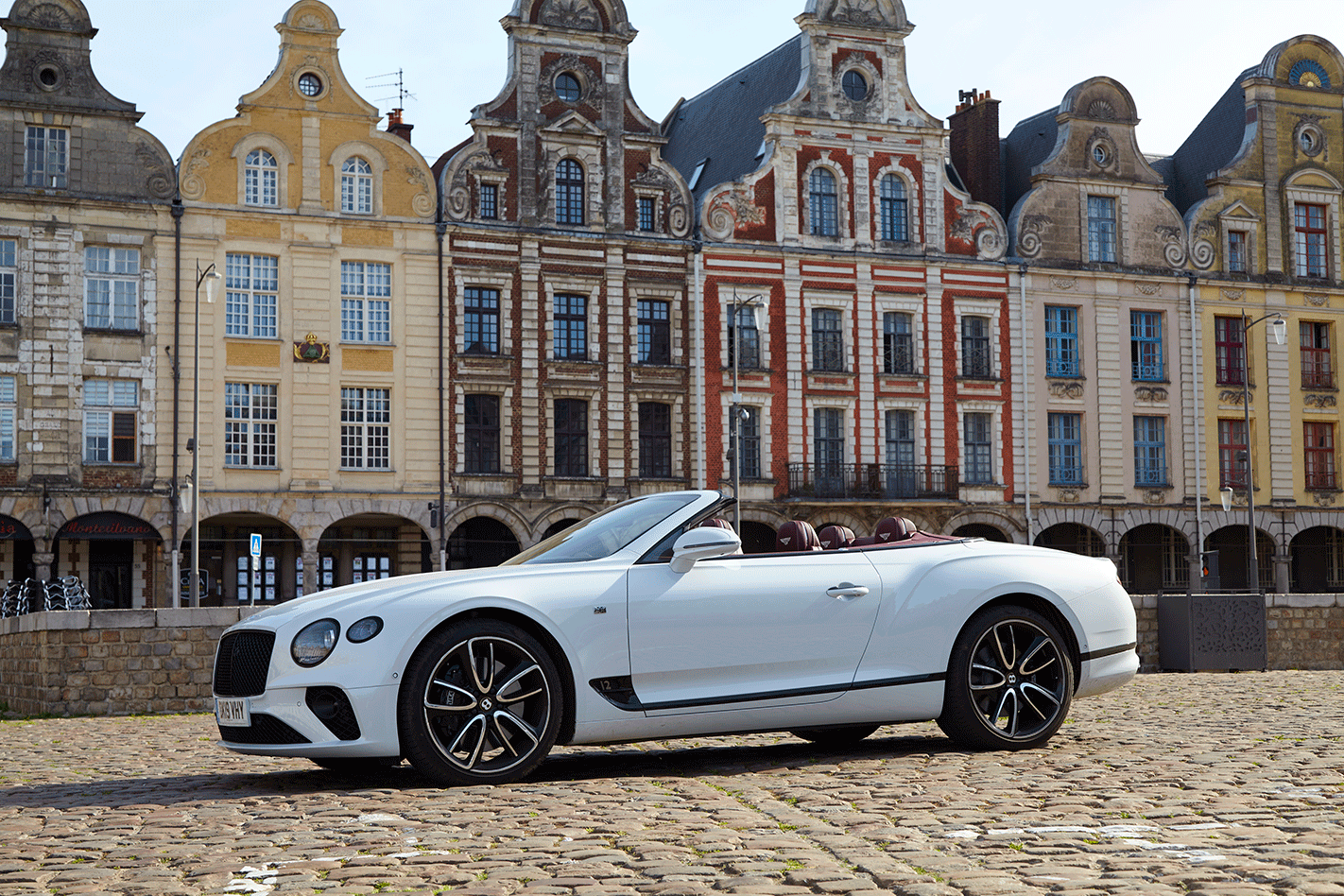THE D1 IN NORTHERN France is one of those perfect roads. It lopes across the plains above the River Somme, at the heart of the WWI battlefields. It’s open, inviting, and flows to the horizon with just a few kinks that won’t impede your progress. If you’re in a fast car like the Bentley Continental GT Convertible, you can let it rip here.
But then, heading east towards Bray-sur-Somme, you crest a rise and an imposing, grey stone cenotaph bearing a Rising Sun emblem looms beside the road. If you’re Australian, it will stop you in your tracks.
It commemorates the First Australian Imperial Force’s Third Division. It is one of the emotive memorials that honour the Diggers who so distinguished themselves in France between 1916 and 1918. As you drive this country – and it is pleasant country to drive, now – they’re constant reminders of the enormity of what happened here and, most especially, of the Australians’ crucial role in the battles that led to Germany’s defeat.
Photo boards around the pillar’s base tell you why the Third Division chose this spot for the memorial to its 6220 men killed and more than 24,000 wounded on the Western Front. The city of Amiens, a crucial transport hub 24 kilometres west, was a key target in the Germans’ massive 1918 Spring Offensive. Capturing it would grab the Allies’ vital supply base and split the British Empire armies and incoming Americans from the French. As battered British battalions were shoved back, Australian divisions – with many of the troops crammed into cattle trucks – were rushed down from Belgium to plug the gap. On March 28, the Third Division dug in here, on the heights above the Somme at Sailly-le-Sec. Two days later the Germans attacked. And were stopped. One of the display boards tells the story:
Three times that day, waves of German infantry tried to come up the valleys and slopes east of the Third Division memorial. Each time they were beaten back with heavy losses caused by intense rifle, machine-gun and artillery fire. No further attempt to break the Australian line here was ever made. To the Third Division, this was the place for their memorial.
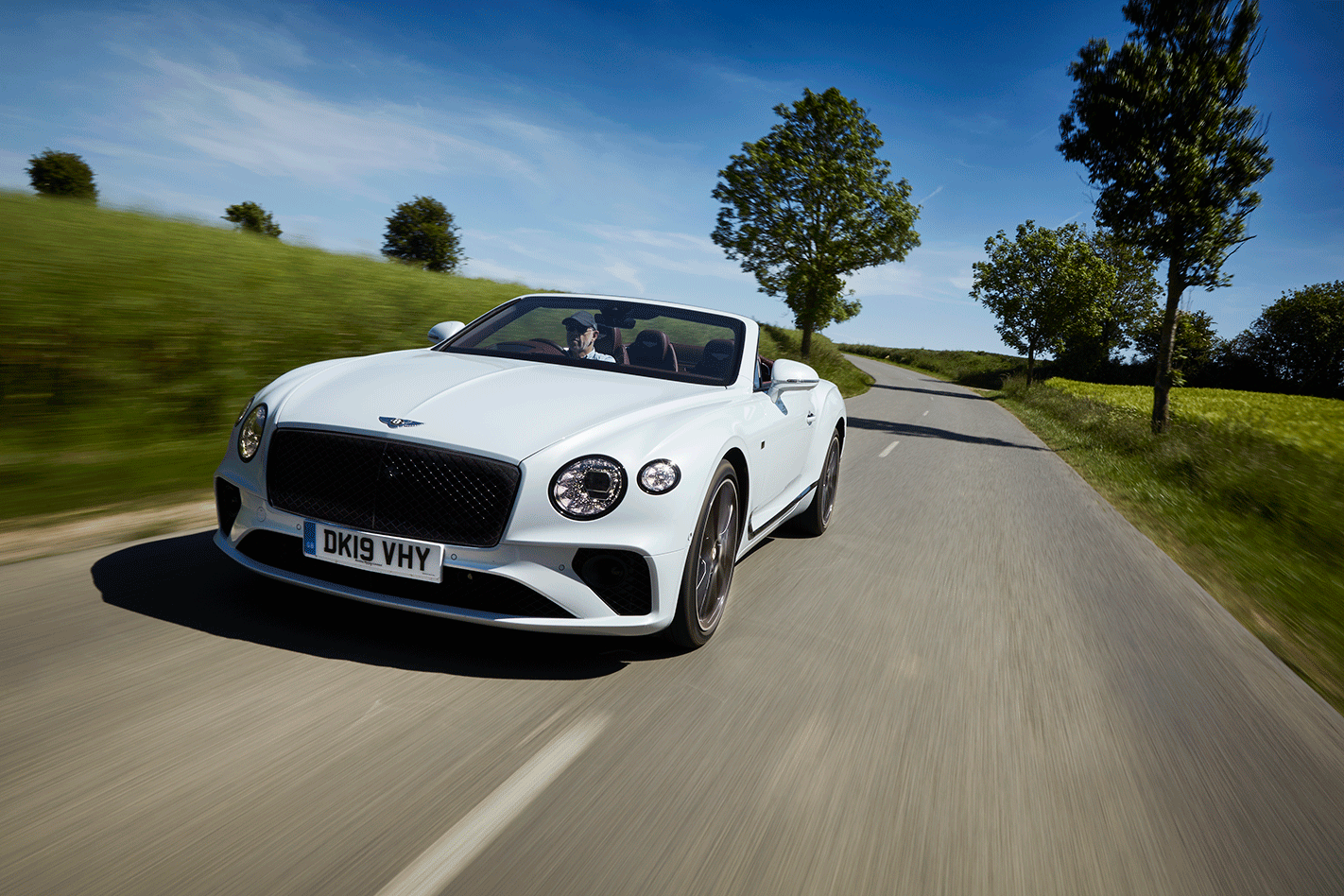
As you gaze around now, the farmland looks much the same as it had been then: unfenced fields rippling with ripening wheat and barley; woods ranged like dark green caterpillars on the horizons; the tip of a village church steeple pricking the skyline; gentle slopes falling to the meandering Somme two kilometres south; and the folds dropping to its sister river, the Ancre, 2.5 kilometres north. But every hectare, in every direction, holds a story. Over the slope to the south-west, Sydney-born carpenter Sgt Cedric Popkin of the Fourth Australian Machine Gun Battalion fired the burst that’s believed to have done for Baron Manfred von Richthofen and brought the Red Baron down in a field beside the D1 a little way back…
Dipping into a book as good as ANZACS on the Western Front brings to life the tragedy and heroism etched into this soil. It’s a masterful guide, written for the Australian War Memorial by Peter Pedersen with Chris Roberts, that divides the Aussies’ and Kiwis’ Western Front battles into 28 chapters with maps and itineraries that show you how to drive and walk the battlefields.
Gliding quietly on in the Bentley along the thin roads across the high fields, I follow their map to a railway embankment in the village of Dernancourt. It’s an ordinary-looking bank between the trainline and a farm track. But to a Tasmanian like me, it’s momentous. Here, on March 28, 1918, the 47th Battalion’s Sergeant Stanley McDougall, a 27-year-old blacksmith from Recherche Bay, south of Hobart, stopped a German breakthrough. He killed seven Germans with his rifle and bayonet and many more with an enemy machine-gun he snatched and fired from the hip. He ran out of ammo, seized a bayonet and killed another four before grabbing a Lewis gun and killing still more. His daring saved many comrades and captured 33 prisoners. He won the Victoria Cross, and eight days later the Military Medal for another fearless Lewis onslaught. His VC was one of the 53 awarded to Australian soldiers on the Western Front (of 64 in WWI).
It’s easy to get to the Somme from major centres like Paris, Brussels or Amsterdam – and particularly London. Going there in a Continental GTC seemed apt. Bentley was born out of the Great War. Captain Walter Owen Bentley started his car company in 1919, 70 days after the armistice and fresh from designing the notably reliable BR1 and BR2 nine-cylinder radial engines for the Sopwith Camel and other aircraft. While visiting a squadron in France he was strafed by von Richthofen and had to leap into a canal where, neck-deep, he met Nobby Clarke whom he later hired as his chief mechanic.
We pass under the Channel on the 35-minute Eurotunnel train, and from Calais are at the battlefields in an hour and a half’s easy autoroute motoring. You’d expect a car of the GTC’s price and mind-boggling specification to excel at ‘motoring’, but the new GTC goes way beyond that. It drives. Its extraordinary refinement, best expressed in an impeccable ride and hush, top up or down, is obvious from the outset. But as we start driving the loops around the battlefields that my WWI historian friend Rich Hughes and I had planned, I learn how sublimely that ride is mixed with sharp handling and imperious cornering ability.
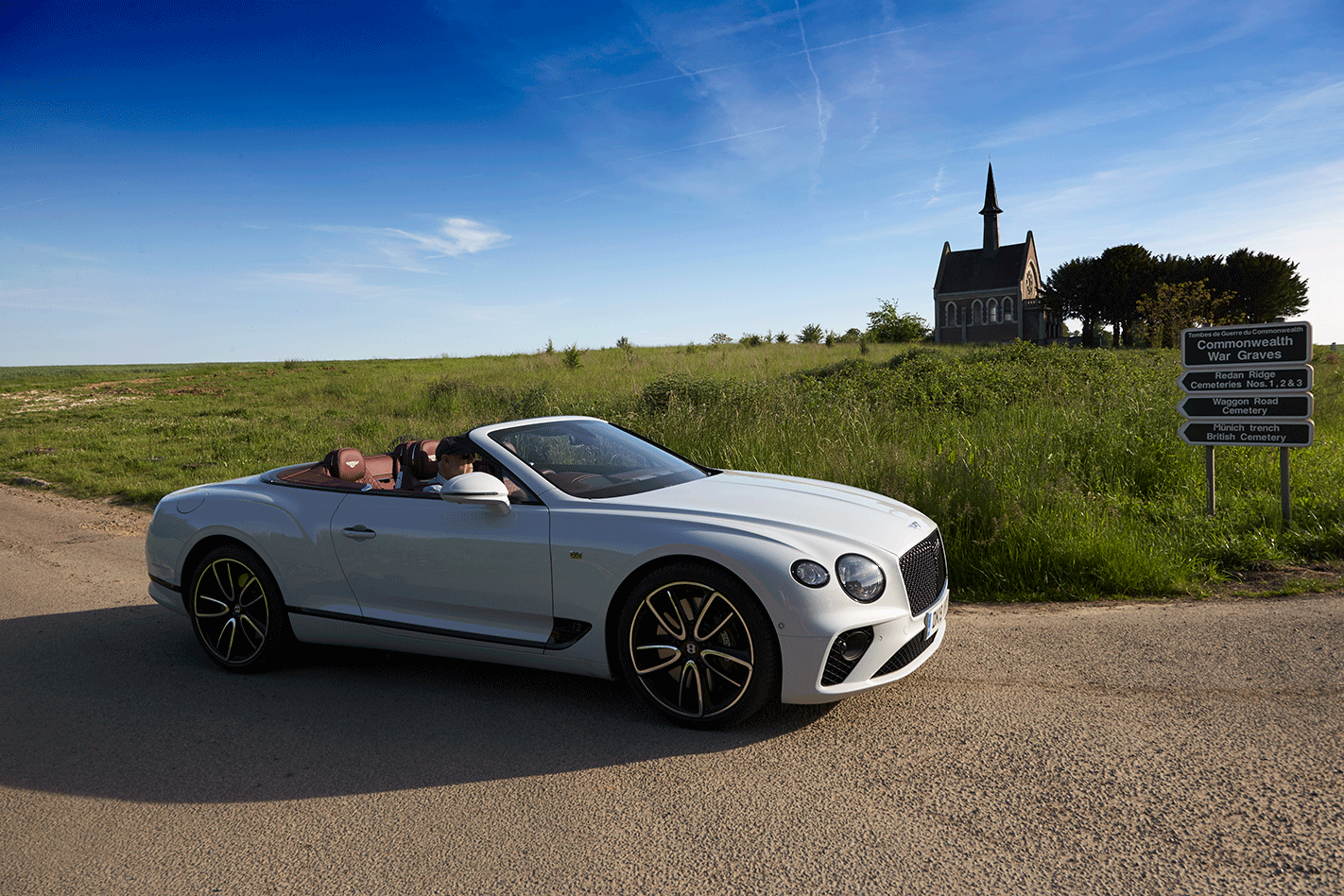
Feed in searing acceleration – 0-160km/h in 8.0 seconds – and you have an opulent four-seat convertible with the pace of a supercar. All that weight – 2865kg gross in a car 4850mm long – doesn’t impede the performance that the 5950cc twin-turbo W12 petrol engine is keen to deliver. It switches in an instant from easing along on six cylinders in deactivation mode to delivering all 12’s 467kW and 900Nm. That thrusts the car from 0-100km/h in 3.8 seconds, near-enough 911 and Mercedes-AMG S63 Cabriolet territory. And a swanky convertible this heavy that will do 333km/h? Something to contemplate.
But as we follow the network of flowing main roads and narrow lanes between historic sites, and the GTC chews up kilometres of the very ground that armies fought over metre by metre, what surprises and delights me most is the way it stays amazingly flat in corners while still delivering its consummate ride. It’s reassuring for passengers and driver alike. Extravagant it might be but ponderous it isn’t. It’s lithe, confidence-inspiring and, apart from its coupe sister, I can’t recall anything with this combination of silence, ride quality, lack of roll, precise handling, and grip.
The ride quality – even on the optional front 275/35 and rear 315/30 ZR22 bespoke Pirelli P Zeros on our car – stems from Bentley’s new continuous damping control system which constantly measures the wheels’ velocity and distance from the body and fiddles the air in the 60 percent bigger three-chamber springs. All the while, a 48-volt roll-control system tweaks actuators on the multi-link suspension’s active anti-roll bars. That’s what kills bodyroll and keeps the tyres upright to deliver the turn-the-wheel-and-it-goes-there handling. But there’s another factor: Pirelli engineers spent 1000 hours alongside Bentley’s, evaluating six batches of tyres at a time in seven development stages, to find the optimum grip, response, comfort, quietness and durability.
While the GTC is fast, svelte, impeccably mannered and luxurious, this third-generation model is also beautiful. It is longer, and moving its front wheels 135mm further forward let the designers drop the engine to draw a lower, more sultry body with divine lines. It’s a pleasure to look at the light playing along those creases running from its front guards onto the doors, and along the haunches. When the roof goes up, in 19 seconds, it’s surprisingly slim and harmonious, too – and drops cabin noise 3dB to the level of the previous Continental coupe.
All the sumptuousness and technology of its hand-made cabin wouldn’t matter if the driving position were flawed. But it too is perfect. The seats adjust 20 ways – there’s an optional massage facility – and include warmers that waft hot air around your neck, pleasant on an evening drive. The rear buckets cosset too, but there’s not quite enough legroom for adults for long distances. The 235-litre boot, better than before because the roof folds more compactly, will serve two adults and children with small bags. And, with a 90-litre tank, how pleasing it is to see the fuel display saying the range is 850km (in reality closer to 660km if you push on; I logged 13.5L/100km). If, as part of the $141,835 worth of options on our $606,435 First Edition and Centenary spec GTC, you’d included the $17,296 2200W 18-speaker Naim audio system, I think you’d be pleased. It’s as serene as the rest of the car.
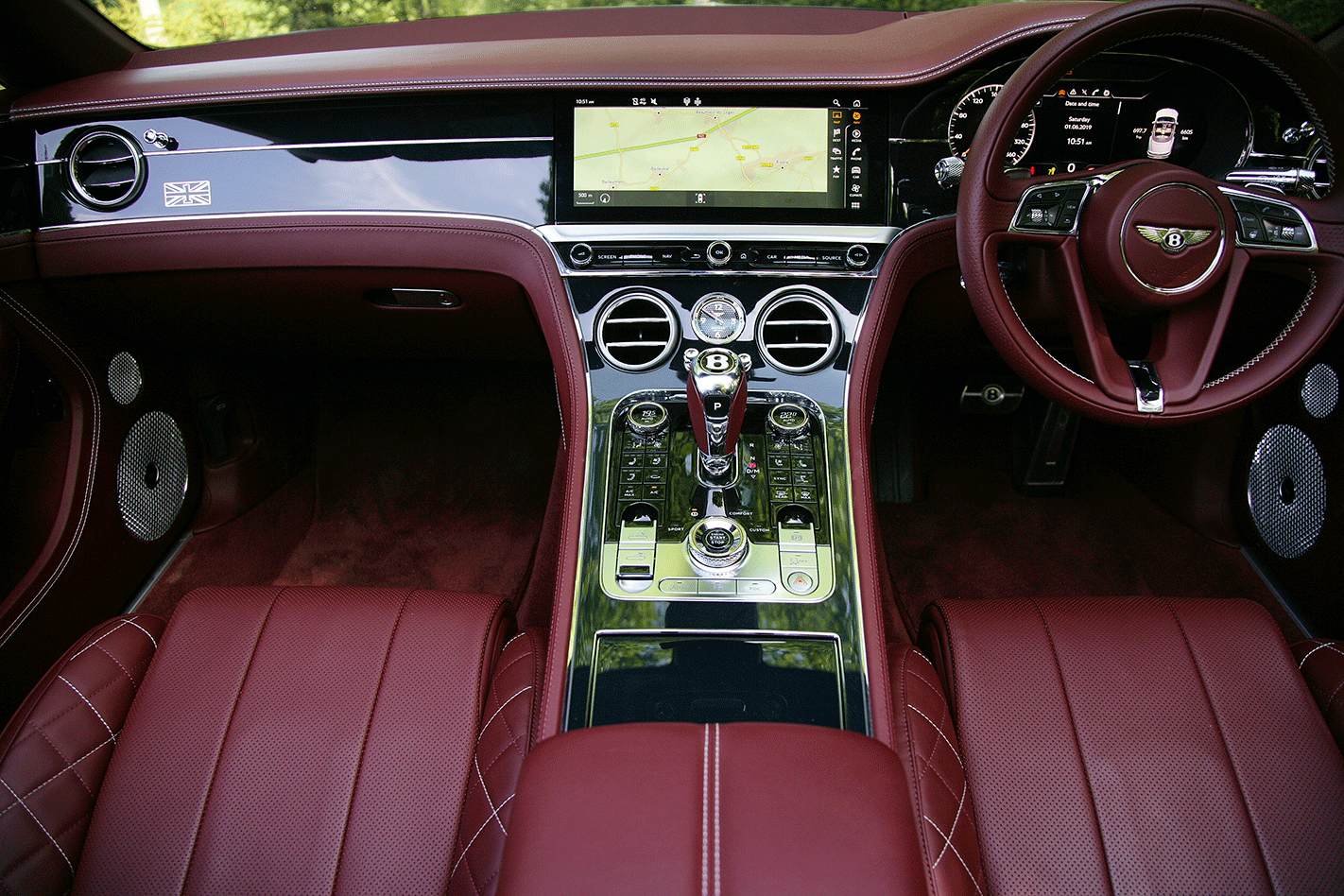
One thing occasionally disrupts the GTC’s dignity. As it slows for traffic lights, for example, the ZF eight-speed dual-clutch transmission picks up first gear with a bit of a jolt. Developing a gearbox to be ever-smooth with such torque is a big ask, and Bentley admits improvements are due. It says distance helps: the ECU is constantly learning and adapting to improve shift quality.
As we roam the pretty country of the Somme, roof-down in 30-degree heat, we’re awed by the number of cemeteries visible from almost every road. Each headstone tells its own story; Aussies alongside Kiwis, Brits, Canadians and French, often interspersed with Germans. As tour guide Michael McKernan wrote in The Age: “It still clutches at us, the Great War; it can still summon powerful emotions. Why, travellers ask, did those in charge keep doing this to decent young Australians? Five thousand five hundred lost at Fromelles; 27,000 seven weeks later by the end of Pozières and Mouquet Farm. Too much death, too much terrible injury and suffering. Why?” All told, 46,000 died on the Western Front.
I find some cheer in starting to understand how the war changed in 1918 when, with the Australian divisions at the forefront, the British Empire forces gained an efficiency, capability and technology that stopped the Germans’ last offensive, and in the final 100 days beat them in battle after battle until they capitulated. I think about the start of that turnaround as I stand beneath the flags at the Australian Corps Memorial on the ridge above Le Hamel. The Battle of Hamel, fought on July 4, 1918, was over in just 93 minutes with all its objectives gained. It was a triumph for Australian Corps commander Lieutenant General John Monash and became the template for the Allied attacks that won the war. With painstaking planning, Monash specified unprecedented cooperation between infantry, machine-guns, artillery, tanks, aircraft and signals. Two innovations played a major role: the powerful new Mark V tank, and dropping ammunition from aircraft to forward troops. It was the first time Americans fought alongside Australians too, the start of a century-long alliance.
Peter FitzSimons’ fast-paced book Monash’s Masterpiece: The Battle of Le Hamel and the 93 Minutes that Changed the World tells the story, including the incredible tales of how Private Henry Dalziel of Irvinebank, Queensland, and Lance Corporal Thomas Axford of Coolgardie, Western Australia, won VCs.
We drive a little way west to the main Aussie shrine, the Australian National Memorial near Villers-Bretonneux, site of another crucial AIF victory. Spectacular twin white stone pavilions sit either side of the entrance to the cemetery that fans up the slope to the great tower and wall of remembrance. Last year, the $100m Sir John Monash Centre museum and multimedia centre opened there to tell the AIF’s story in France.
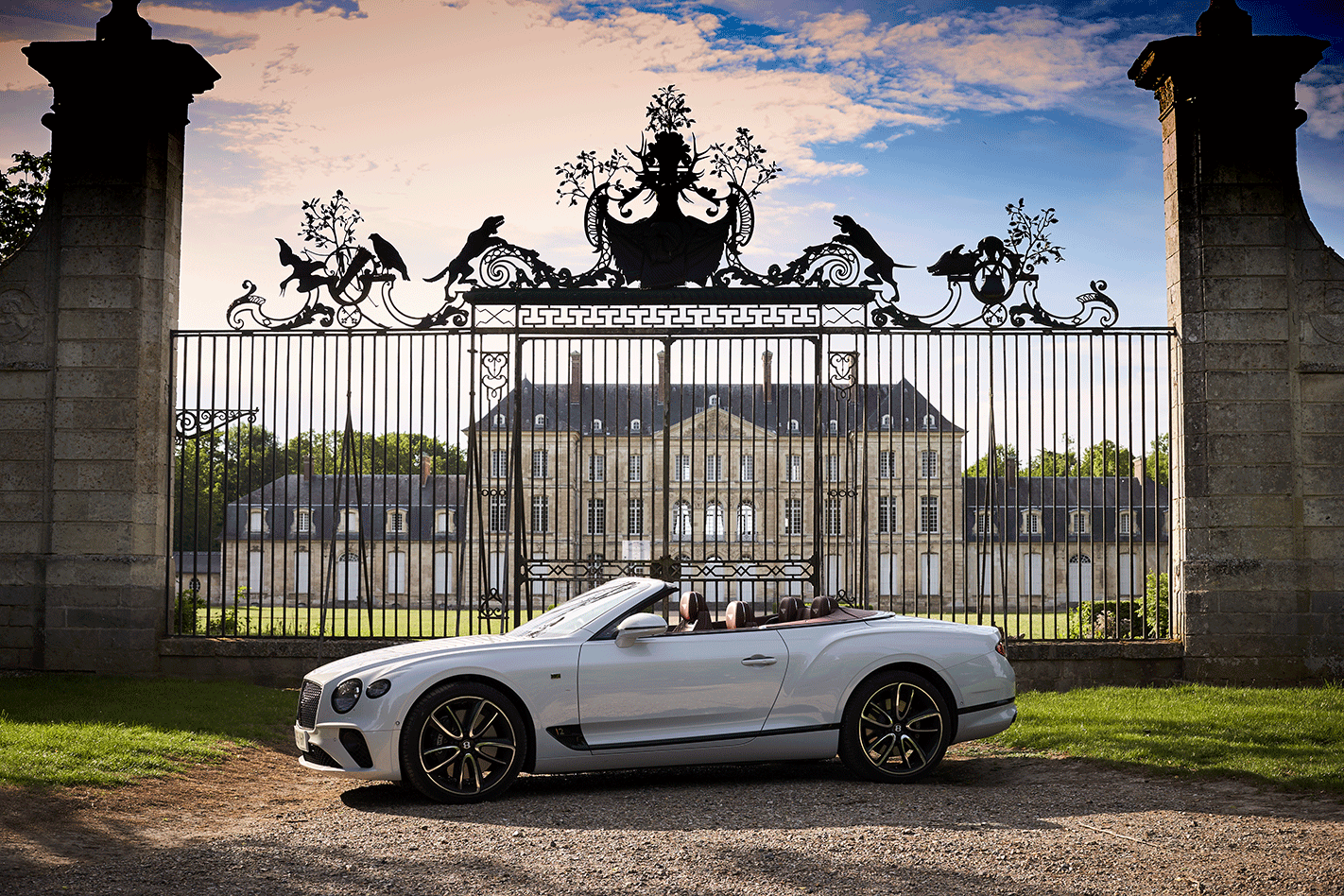
Finally, to pay homage to Monash, we drive 23km west to Château de Bertangles, just north of Amiens, where he planned the battles of Hamel and Amiens. We peer through the grand gates and imagine the front lawn of his HQ packed with captured German guns, past which King George V walked on August 12, 1918 when he came to knight Monash on the château’s steps – the first time in 200 years a British king had knighted a commander in the field. He was in no doubt about Monash’s worth. Sir John’s impeccable campaigns are still closely studied in Australian and American military colleges. Former Governor-General Sir Peter Cosgrove is among those calling for Bertangles’ significance to be more widely celebrated.
It’s an hour and a half back to our hotel north-east at Arras. On the quiet side roads of a Sunday evening, I dial the GTC from the well-judged ‘Bentley’ drive mode to ‘Sport’. The suspension stiffens without diminishing the composure. The active four-wheel-drive system shifts 83 rather than the usual 62 percent of the torque to the rear wheels so that when I ask the silken W12 for big dollops out of corners the car feels tauter and more tail-driven but never gets out of line. The steering isn’t very involving but its accuracy and consistency are enough. The transmission works faster and its changes are as instant as they are seamless, giving me as much speed as each bit of road can handle. Blasting into the bends, I’d initially worried about all that weight, but the vented iron discs – 420mm at the front and 380mm rear, with 28 pistons across their four calipers – do the job. On the over-run, the tailpipes’ basso profundo wafts up over the tail but is no more intrusive than the warble at the loftier end of the rev range on the way up. So it is as fast and inspiring a drive as it is unruffled.
Over a drink in the great square at Arras, where buildings still show pockmarks from German shelling, I think about something a Dutch boat skipper had said earlier in the day. We were parked by the River Somme for a picnic lunch and he was mooring his boat nearby. “That’s a wonderful car,” he called. “But it’s not British, is it?”
I doubt that he appreciated how much of the Bentley’s design, engineering and development – and not just its hand-crafted manufacture – is done at Crewe; or that while it shares its MSB platform with Porsche’s Panamera, Bentley’s requisites were present from the start. That included engineering for a drop-top, which is why the body is uncommonly rigid and the roof takes so little space. It seems to me that Volkswagen’s money has married the profound abilities of two nations capable of great achievement as well as great destruction to produce something magnificent.
Bentley says the GTC represents all it knows about creating the world’s definitive grand tourers. A few days on the road will leave you in little doubt that its collective knowledge is unsurpassed.
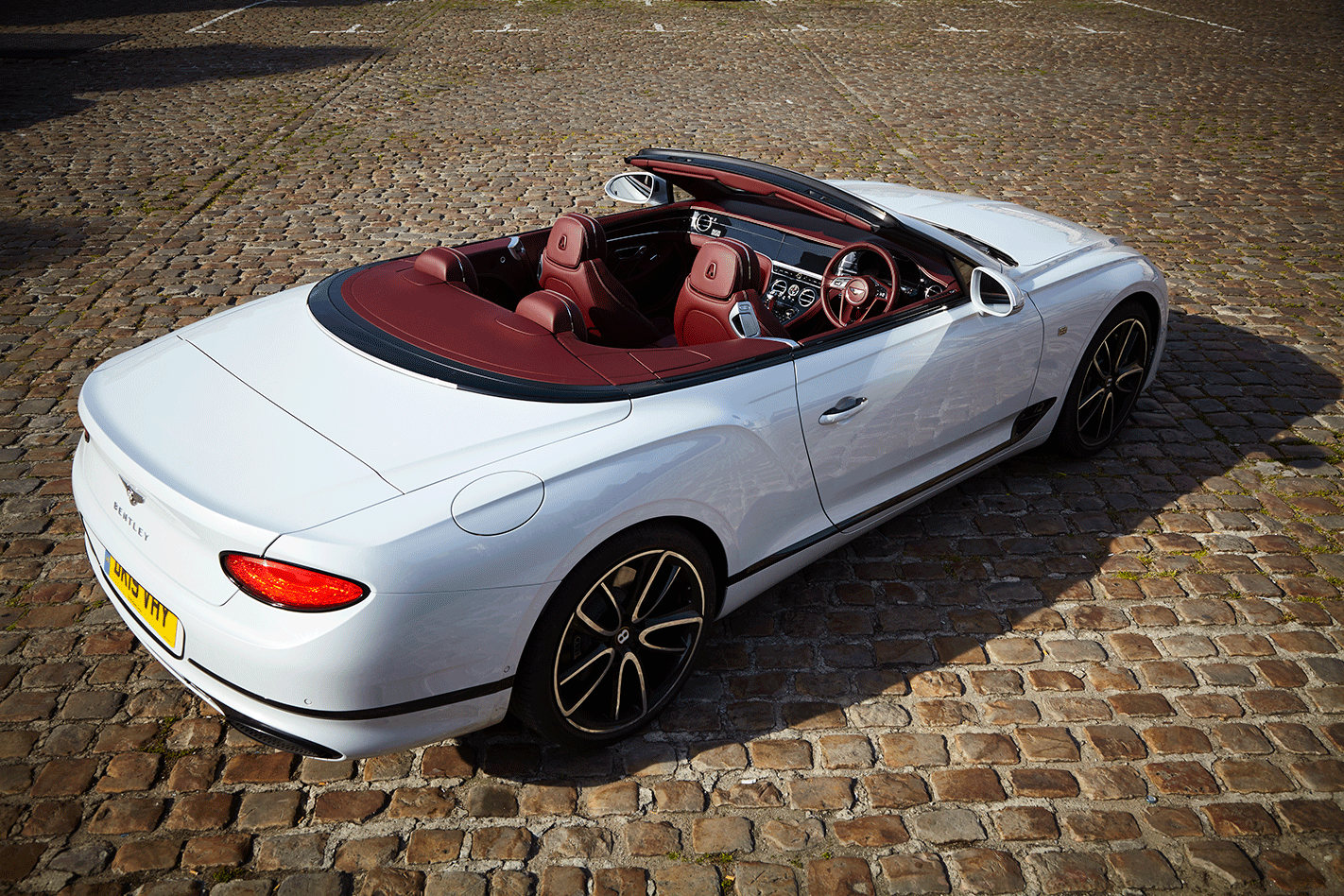
DATE WITH DESTINATION
A personal quest to remember
I’d long wanted to visit the Somme battlefields. My great uncle George Nichols, from Bothwell, Tasmania, was there with the 38th Field Artillery Battery, my wife’s grandfather Bert Sainty, from Gordon, NSW, was a signaller with the Fourth Battalion and my friend Peter Robinson’s grandfather Frank Robinson, from Box Hill, Victoria, fought with the Third Pioneer Battalion.
I had a particular reason to go this June. I’d recently discovered that a WWI compass I own had belonged to a 21-year-old British Army captain called Edward Astley. It was with him when he was killed by a German shell on June 1, 1918. I wanted to take the compass, and a little map that he’d hand-drawn and tucked into its case, to his grave in Warlincourt Halte British Cemetery near Arras on the anniversary of his death.
In the same Commonwealth War Graves Commission cemetery lies 2nd Lt Frank Beechey, 30, from Lincolnshire, England. He was one of five brothers killed in the war.

